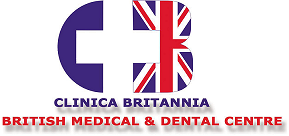Sleep Apnea is a potentially serious sleep disorder where periods of shallow breathing occur whilst asleep often happening up to 30 times an hour and for seconds to minutes at a time causing the deprivation of oxygen to the brain. When the brain becomes aware of this, it triggers the body to arouse for long enough to gasp, choke, or snort to take in air, keeping you alive by reopening the airways.
There are three main types of Sleep Apnea.
• Obstructive Sleep Apnea: This is the most common and occurs when the throat muscles relax.
• Central Sleep Apnea: This occurs when your brain does not send signals to the muscles that control your breathing.
• Complex Sleep Apnea Syndrome: This occurs when you are suffering with both above.
Indicators are snoring, morning headaches and a dry mouth. A new revolutionary test can be performed which will check whether you have apnea by measuring signals from the tip of your index finger with a small light sensor that connects wirelessly with your smartphone. Once you have a positive diagnosis your Dentist can craft a personalised Mandibular splint that is used to reposition the jaw and tongue to improve the airflow reposition with no side effects, enabling a healthy night’s sleep.[:ru][:es]
[:fr][:de]Schlafapnoe ist eine potenziell schwerwiegende Schlafstörung, bei der im Schlaf flache Atemperioden auftreten, die häufig bis zu 30 Mal pro Stunde und für Sekunden bis Minuten auftreten und dem Gehirn Sauerstoff entziehen. Wenn das Gehirn sich dessen bewusst wird, löst es den Körper aus, lange genug zu erregen, um nach Luft zu schnappen, zu würgen oder zu schnauben, um Luft aufzunehmen, und Sie am Leben zu halten, indem Sie die Atemwege wieder öffnen.
Es gibt drei Haupttypen von Schlafapnoe.
• Obstruktive Schlafapnoe: Dies ist die häufigste und tritt auf, wenn sich die Halsmuskeln entspannen.
• Zentrale Schlafapnoe: Dies tritt auf, wenn Ihr Gehirn keine Signale an die Muskeln sendet, die Ihre Atmung steuern.
• Komplexes Schlafapnoe-Syndrom: Dies tritt auf, wenn Sie an beiden oben genannten leiden.
Indikatoren sind Schnarchen, morgendliche Kopfschmerzen und ein trockener Mund. Es kann ein neuer revolutionärer Test durchgeführt werden, der überprüft, ob Sie an Apnoe leiden, indem Signale von der Spitze Ihres Zeigefingers mit einem kleinen Lichtsensor gemessen werden, der eine drahtlose Verbindung mit Ihrem Smartphone herstellt. Sobald Sie eine positive Diagnose haben, kann Ihr Zahnarzt eine personalisierte Unterkieferschiene herstellen, mit der Kiefer und Zunge neu positioniert werden, um die Neupositionierung des Luftstroms ohne Nebenwirkungen zu verbessern und einen gesunden Schlaf zu ermöglichen.[:]

